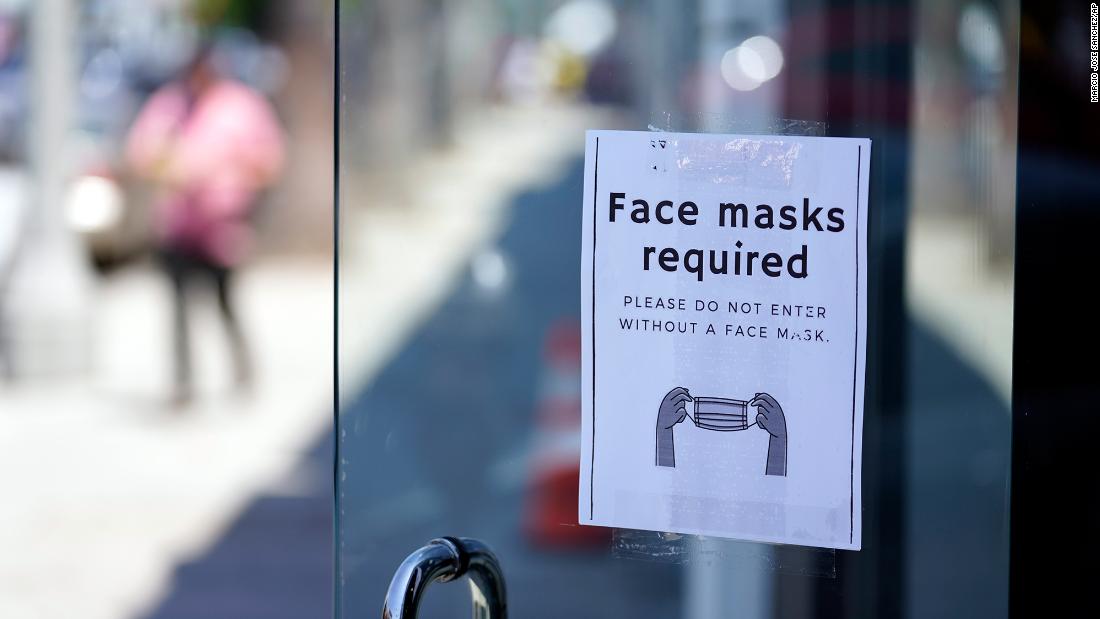
The two terms are part of the US Centers for Disease Control and Prevention's four-tiered system that measures the level of community transmission in each county: low, moderate, substantial and high. On the CDC's website, you can run a search by state or county and click around the color-coded map to see how active the virus is where you live.
A county's level of transmission is based on just two metrics: new Covid-19 cases per 100,000 people and the positivity rate, both measured over the last seven days. The basic idea is that these show how much virus is spreading around us, CNN Medical Analyst Dr. Leana Wen said.
"The level of coronavirus transmission is an important determinant of how much risk you're in, if you're vaccinated or unvaccinated," she said.
Specifically, a "Low" transmission is considered no more than 10 cases per 100,000 people, or a test positivity rate of less than 5%. "Moderate" transmission is 10 to 50 cases per 100,000 people, or a positivity rate between 5% and 8%. "Substantial" transmission is 50 to 100 cases per 100,000, or a positivity rate between 8% and 10%, and "high" transmission is 100 or more cases per 100,000 people or a positivity rate of 10% or higher.
If a county has values in two different transmission levels, then the CDC uses the metric that is higher.
On the CDC's map, low counties are represented in blue, moderate counties are in yellow, substantial counties are in orange and high counties are in red. Counties vary in size so it's also a good idea to check a city, state or municipal health department website.
As of Wednesday, about 50% of counties have high transmission and 17% have substantial transmission, which covers wide swaths of the South and West, according to CDC data. About 27% of US counties are considered to have moderate transmission and only about 9% have low transmission.
Health officials say this new guidance, an update from May, reflects the latest science on the more transmissible Delta variant and evidence that suggests vaccinated people can still spread the virus. The vast majority of spread still appears to come from unvaccinated people, who are at much higher risk of severe illness that can send people to the hospital or kill them.
The guidance on mask wearing is meant to remind people who are fully vaccinated that they might be able to infect others, CDC Director Dr. Rochelle Walensky said Tuesday.
The strengths and weaknesses of the CDC's system
Several medical experts took issue with parts of the CDC's decision to update the mask guidance and its specific metrics.
For one, the CDC's system solely is based on new cases and positivity rate -- but not vaccinations, hospitalizations, deaths or any of the other relevant metrics experts have come to know since the pandemic began.
"If you were to ask me how I define a community that has high transmission, I say, 'I don't look at any one number,'" said Dr. Peter Hotez, dean of the National School of Tropical Medicine at the Baylor College of Medicine. "I don't look at positivity rate, the per-100,000 rate, I don't look at hospitalizations or deaths. I look at it all in aggregate to really get a sense of what's happening on a really high level."
Hotez also took issue with the CDC using 100 cases per 100,000 people as a "high" level of transmission, which he said was a low bar. As cases continue to rise in the coming few weeks, the CDC's map is likely to become less useful, he said.
"Everything is going to be red pretty soon, and that's not good either because it doesn't give you a lot of credit for vaccinations," he said.
Wen noted that the CDC's metrics don't take into account an area's vaccination rate.
"I wish that the CDC had tied indoor mask wearing to vaccination rates in a community. That's something people can work towards, and it's something that's less arbitrary," she said.
"It's also more motivating as an incentive," she added.
Further, both case rates and positivity rate are based on the amount of testing in a community, and it's not clear whether the US is doing so at a sufficient level.
"I don't think we're doing a good job of measuring how much spread is actually underway in this country," Dr. Scott Gottlieb, former commissioner of the US Food and Drug Administration, said on NPR's "Morning Edition" on Wednesday. "I think we have far more spread than what we're picking up."
The US is not doing a lot of testing, he said, and much of the testing done is at home and not being reported to local authorities. And many people who are getting infected now or experiencing mild symptoms are not seeking out tests.
"Generally speaking, the people who are presenting for testing are either people who are getting very sick, or people who are developing telltale symptoms of Covid like loss of taste or smell," he said. "So, we're picking up probably a very small fraction of the overall infections."
Wen was similarly skeptical of the level of testing in some parts of the US, saying she believed the US could be under-testing.
"I'm not sure that total number of cases paints the most accurate picture, but it's at least a reasonable proxy," she said.
Still, her main problem with the CDC's guidance was that it missed the basic point of this phase of the pandemic -- getting people vaccinated.
"The main problem is not the vaccinated, it's the unvaccinated. Let's not get this backwards here," she said.
"What" - Google News
July 29, 2021 at 04:44AM
https://ift.tt/3l8qDUv
What the CDC's 'substantial' and 'high' levels of Covid-19 transmission actually mean - CNN
"What" - Google News
https://ift.tt/3aVokM1
https://ift.tt/2Wij67R
Bagikan Berita Ini














0 Response to "What the CDC's 'substantial' and 'high' levels of Covid-19 transmission actually mean - CNN"
Post a Comment